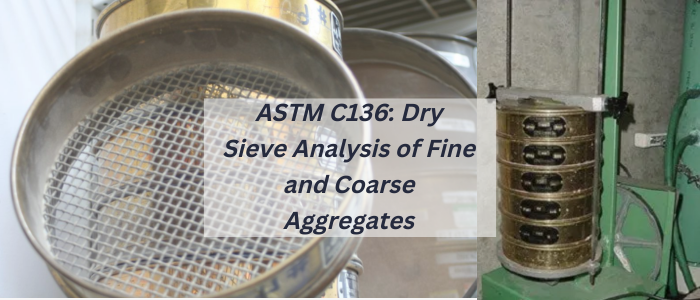Dry Sieve Analysis of Fine and Coarse Aggregates
Purpose of ASTM C136
This post describes the procedure of ASTM C136 to determine the particle size distribution of fine and coarse aggregates by sieving
Why is ASTM C136 Important?
This test provides a mean to control the quality of aggregates production, which are essential components in concrete and asphalt mixtures. Knowledge of particle size distribution allows producers of concrete to meet the specified requirements of aggregates.
Particle size distribution is also a crucial factor in concrete mixture design. Concrete’s workability, strength, and durability can be affected by the proportions of various-sized particles in the aggregates. In order to achieve the necessary concrete qualities, ASTM C136 aids in mix design optimization.
Principle of ASTM C136
In order to evaluate the distribution of particle sizes in aggregates, ASTM C136 uses the scientific concept of sieve analysis. By methodically sieving materials, this approach offers important insights on the gradation, composition, and homogeneity of aggregates, which affect the mechanical and physical characteristics of building materials and are especially useful for improving concrete mix designs.
Needed Equipment and Materials
Tools for ASTM C136 (Dry Sieve Analysis of Fine and Coarse Aggregates)
The following apparatus are used to conduct the ASTM C136 test:
- A scale.

- Standard sieves for grading of fine aggregates: 4.75 mm, 2.36 mm, 1.18 mm, 600 μm, 300 μm, 150 μm, 75 μm (Nos. 4, 8, 16, 30, 50, 100, and 200)
- Standard sieves for grading coarse aggregates: 2 in., 1½ in., l in., ¾ in., ⅜ in., plus a 4.75-mm (No. 4) sieve
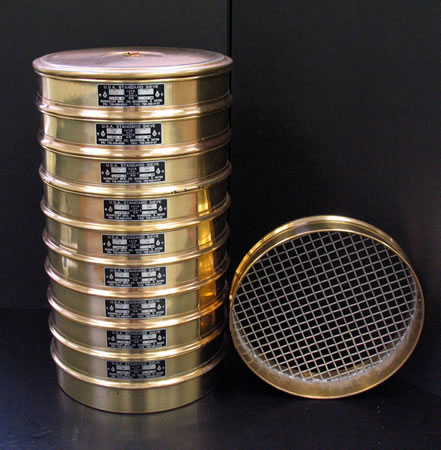
- An oven with enough space and capable of maintaining a uniform temperature of 110 plus or minus 5 °C
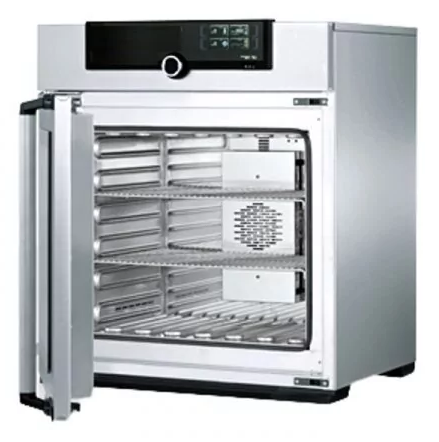
PPE (LA Abrasion Test of Coarse Aggregate)
- Safety glasses
- Rubber gloves
- Mask
- Steel-toed shoes

Materials
A sample of fine aggregate: 0.5 kg
A sample of coarse aggregate, according to the maximum aggregate size from 9.5 mm to 50 mm [⅜ to 2 in.])
ASTM C136 Test Procedure
- First, get a dry aggregate sample from the specific gravity and absorption tests of coarse and fine aggregates.
- Put the sample on the top sieve and start sieving. Continue the sieving until not more than 1% by weight of the residue passes any sieve during 1 minute.
- If you want to do the wet analysis procedure to obtain the material finer than 75 μm (ASTM C117), weigh the dry aggregates and then cover with water, agitate, and pour off the wash water containing suspended particles.
- Repeat until the wash water is clear.
- Dry the aggregates a second time at 110° ± 5°C and weigh.
Computations
Computations (Dry Sieve Analysis of Fine and Coarse Aggregates)
Using Table 1 (Dry Sieve Analysis for Fine and Coarse Aggregates), calculate percentages based on the total weight of the sample.
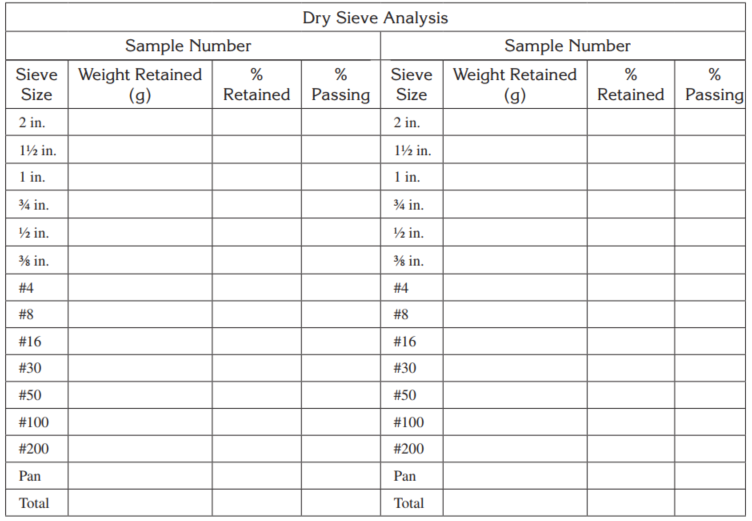
Compute the percent of material retained on each sieve and the percent of material that passes through each sieve size for both the coarse and the fine aggregates.
Follow the procedure at the bottom of Table 1 for the determination of all minus No. 200 (pan) mineral aggregates by wet analysis.
Plot the results on the gradation chart (Figure 1), which is a semilog scale.
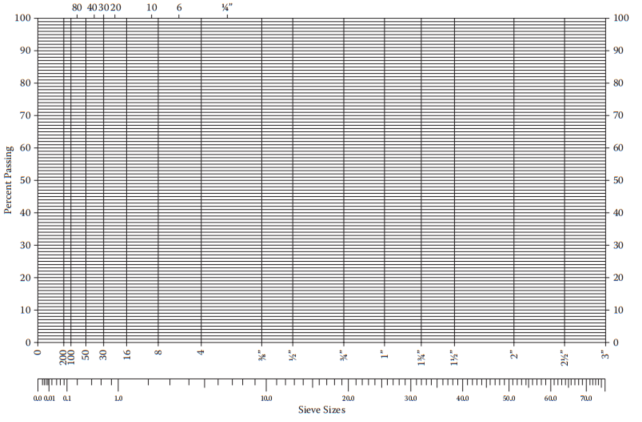
On the graph, the ordinate is the total percent by weight passing a given size on an arithmetic scale.
The nominal maximum size aggregate for a concrete mix is the smallest size through which at least 95% of the aggregates will pass.
Plot the midband gradation line on this graph. It is generally considered best when this gradation line is parallel to the maximum density line and a few percentages above or below it.
Reference: Standard Test Method for Sieve Analysis of Fine and Coarse Aggregates
Read Also:
ASTM C127 Obtain Specific Gravity and Absorption of Coarse Aggregate
